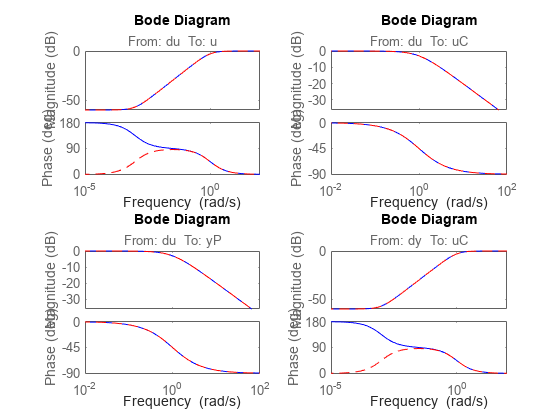gapmetric
Gap metric and Vinnicombe (nu-gap) metric for distance between two systems
Description
[
computes the gap and Vinnicombe (ν-gap) metrics for the distance between
dynamic systems gap,nugap] = gapmetric(P1,P2)P1 and P2. The gap metric values
satisfy 0 ≤ nugap ≤ gap ≤ 1. Values close to zero imply that any controller that stabilizes
P1 also stabilizes P2 with similar closed-loop
gains.
Examples
Input Arguments
Output Arguments
More About
References
[1] Georgiou, Tryphon T. “On the Computation of the Gap Metric.” Systems & Control Letters 11, no. 4 (October 1988): 253–57. https://doi.org/10.1016/0167-6911(88)90067-9.
[2] Zhou, K., Doyle, J.C., Essentials of Robust Control. London, UK: Pearson, 1997.
Version History
Introduced before R2006a

